Resources
About Us
Low/Zero Waste Household Products Market by Product Type (Kitchen, Bathroom, Laundry, Storage, Disposable Alternatives), Material (Bamboo, Glass, Bioplastics), Distribution Channel, End User, and Geography - Global Forecast to 2032
Report ID: MROTH - 1041472 Pages: 298 Apr-2025 Formats*: PDF Category: Others Delivery: 24 to 72 Hours Download Free Sample ReportReport Overview
This comprehensive market research report analyzes the rapidly expanding low waste household products market, evaluating how sustainable alternatives are transforming traditional household goods to reduce environmental impact while meeting consumer needs. The report provides a strategic analysis of market dynamics, growth projections till 2032, and competitive positioning across global and regional/country-level markets.
Market Dynamics Overview
Key Market Drivers & Trends
The overall low/zero waste household products market is primarily driven by rising environmental consciousness, stringent regulations on single-use plastics, and growing preference for sustainable living. The increasing adoption of refill stations and package-free stores is transforming retail models, while compostable packaging solutions are gaining significant traction. Social media influence has accelerated zero-waste lifestyle adoption, particularly among younger demographics, while corporate sustainability commitments are pushing manufacturers to develop more environmentally responsible alternatives.
Key Challenges
Despite growth prospects, the overall low waste household products market faces challenges including higher price points limiting mass adoption, limited availability in mainstream retail channels, consumer convenience preferences favoring disposable options, supply chain optimization difficulties for sustainable packaging, and balancing product performance with sustainability objectives.
Growth Opportunities
The low waste household products market offers several high-growth opportunities. Subscription-based business models are gaining traction by providing regular delivery of sustainable products while minimizing packaging waste. Innovation in biodegradable materials presents significant potential for product development, while expansion into emerging markets represents a vast untapped consumer base. Circular economy initiatives that reuse and repurpose materials are creating new business models, and the DIY product movement is empowering consumers to create their low-waste alternatives.
Market Segmentation Highlights
By Product Type
Kitchen Products currently dominate the overall low waste household products market, with reusable food storage solutions and compostable cleaning tools being fundamental products driving consumer adoption. Key items include silicone food storage bags, beeswax wraps, bamboo utensils, and biodegradable dish brushes. However, the Bathroom Products segment, particularly solid toiletries and reusable menstrual products, is projected to grow at the highest CAGR of 28.9% through 2032 as consumers increasingly prioritize personal care sustainability. The Laundry and Cleaning segment, including concentrated detergents and biodegradable cleaning tools, is also witnessing significant growth during the forecast period.
By Material
Based on material, Bamboo and Wood hold the largest share of the overall low-waste household products market due to their renewable nature, biodegradability, and aesthetic appeal. Glass products form a substantial segment due to durability and recyclability benefits, while Stainless Steel applications in food containers and reusable bottles represent significant market value. However, Biodegradable Plastics and Organic Textiles segments are expected to experience the highest growth rates through 2032 as manufacturers develop more advanced materials that maintain convenience while reducing environmental impact.
By Distribution Channel
Online Retail currently represents the largest market segment by value, benefiting from direct-to-consumer models that align with sustainability messaging and allow brands to control packaging practices. Specialized Zero Waste Stores have seen rapid expansion in urban centers, while Mainstream Retail Chains are gradually increasing shelf space for sustainable alternatives. However, Subscription Services are anticipated to show the highest growth rate during the forecast period due to the recurring revenue model and convenience factor for consumers seeking to maintain sustainable practices.
By End User
The Residential segment dominates the overall low waste household products market, accounting for approximately 75% of the market value in 2025, driven by individual consumer adoption of sustainable lifestyle choices. However, the Commercial segment—particularly in hospitality and educational institutions—is expected to grow at a faster pace through 2032 as businesses incorporate sustainability into their operational practices and brand positioning. Within commercial applications, hospitality leads the market as hotels implement plastic-free amenities to enhance their environmental credentials.
By Geography
Europe leads the global low waste household products market followed by North America due to stringent regulations, advanced consumer awareness, and established sustainability infrastructure. Germany represents the largest market in Europe, while the U.S. leads North American adoption. However, the Asia-Pacific region, particularly Japan, South Korea, and Australia is projected to witness the highest CAGR during the forecast period of 2025-2032, driven by rapidly growing environmental awareness, government initiatives to reduce plastic waste, and increasing disposable incomes. Latin America shows promising growth potential, particularly in sustainability-focused markets like Chile and Brazil.
Competitive Landscape
The global low/zero waste household products market features a diverse competitive landscape with established multinational consumer goods companies expanding sustainable offerings and independent sustainability-focused manufacturers gaining significant market share.
Established Consumer Goods Companies
Unilever PLC, through its subsidiary Seventh Generation, Inc., leads established players with its comprehensive sustainable product portfolio spanning cleaning products, paper goods, and personal care. S.C. Johnson & Son, Inc. has strengthened its position through strategic acquisitions of pioneering eco-brands including Ecover and Method Products, PBC, leveraging their established formulations and consumer trust. Venus Laboratories, Inc. (operating as ECOS/Earth Friendly Products) has maintained its position as one of the longest-operating plant-based cleaning product manufacturers in the market. These companies compete primarily on manufacturing scale, R&D capabilities for performance parity with conventional products, and extensive distribution networks.
Independent Sustainable Manufacturers
Cot'n Wash, Inc. (Dropps) has disrupted the laundry and dishwasher detergent categories with its plastic-free pod delivery system, while Who Gives A Crap, Inc. has established strong brand recognition in sustainable paper products with its direct-to-consumer model. Blueland Co. has pioneered the tablet-based refill system for cleaning products, significantly reducing plastic packaging and transportation emissions. Ethique Limited has differentiated itself through completely solid product formulations eliminating water and packaging waste. These independent manufacturers compete primarily on sustainability innovation, minimalist packaging approaches, and authentic mission-driven positioning.
The manufacturing landscape is characterized by increasing acquisition interest from traditional consumer goods conglomerates seeking to expand sustainable portfolios, while material science partnerships between ingredient suppliers and product manufacturers accelerate sustainable formulation development. Leading manufacturers are increasingly adopting circular economy principles through concentrated formulations, packaging innovations, and ingredient sourcing transparency.
As the market matures, key manufacturers will need to address scale challenges through production efficiency, develop formulations that maintain efficacy while reducing environmental impact, and implement verifiable sustainability metrics to counter greenwashing concerns. Successful manufacturers will balance environmental benefits with product performance and price accessibility to drive mainstream adoption beyond environmentally-conscious early adopters.
|
Particulars |
Details |
|
Number of Pages |
298 |
|
Format |
PDF & Excel |
|
Forecast Period |
2025–2032 |
|
Base Year |
2024 |
|
CAGR (Value) |
22.9% |
|
Market Size (Value)in 2025 |
USD 7.42 Billion |
|
Market Size (Value) in 2032 |
USD 37.55 Billion |
|
Segments Covered |
By Product Type
By Material
By Distribution Channel
Market by End User
|
|
Countries Covered |
North America (U.S., Canada) |
|
Key Companies |
Seventh Generation, Inc. (subsidiary of Unilever PLC), Ecover (subsidiary of S.C. Johnson & Son, Inc.), Blueland Co., CleanCult, Inc., Ethique Limited, Dropps (Cot'n Wash, Inc.), Meliora Cleaning Products, LLC, Who Gives A Crap, Inc., Method Products, PBC (subsidiary of S.C. Johnson & Son, Inc.), Mrs. Meyer's Clean Day (subsidiary of S.C. Johnson & Son, Inc.), Bio-Kleen Products, Inc., Venus Laboratories, Inc. (dba ECOS/Earth Friendly Products), Nellie's Clean, Inc., Aunt Fannie's, Inc., Better Life, LLC |
The global low waste household products market was valued at $6.0 billion in 2024. This market is expected to reach $37.55 billion by 2032 from an estimated $7.42 billion in 2025, at a CAGR of 22.9% during the forecast period of 2025–2032.
The global low waste household products market is expected to grow at a CAGR of 22.9% during the forecast period of 2025–2032.
The global low/zero waste household products market is expected to reach $37.55 billion by 2032 from an estimated $7.42 billion in 2025, at a CAGR of 22.9% during the forecast period of 2025–2032.
The key companies operating in this market include Seventh Generation, Inc. (subsidiary of Unilever PLC), Ecover (subsidiary of S.C. Johnson & Son, Inc.), Blueland Co., CleanCult, Inc., Ethique Limited, Dropps (Cot'n Wash, Inc.), Meliora Cleaning Products, LLC, Who Gives A Crap, Inc., Method Products, PBC (subsidiary of S.C. Johnson & Son, Inc.), Mrs. Meyer's Clean Day (subsidiary of S.C. Johnson & Son, Inc.), Bio-Kleen Products, Inc., Venus Laboratories, Inc. (dba ECOS/Earth Friendly Products), Nellie's Clean, Inc., Aunt Fannie's, Inc., Better Life, LLC
Major trends shaping the market include the rise of refill stations and package-free stores, growth in compostable packaging solutions, increased adoption of concentrated products, and the DIY and homemade product movement.
• In 2025, the residential segment is expected to account for a larger share of the low waste household products market.
• Based on material, Bamboo and Wood hold the largest share of the overall low waste household products market in 2025.
• In 2025, the Kitchen Products segment will dominate the overall low waste household products market, with reusable food storage solutions being fundamental components driving adoption.
• Based on distribution channels, Online Retail represents the largest market segment by value.
Europe leads the global low waste household products market followed by North America due to stringent regulations, advanced consumer awareness, and established sustainability infrastructure.
The growth of this market is driven by rising environmental consciousness among consumers, stringent regulations on single-use plastics, growing preference for sustainable living, increasing corporate sustainability commitments, and social media influence on zero-waste lifestyle adoption.
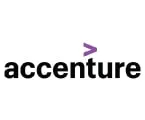

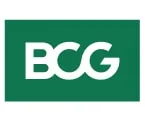
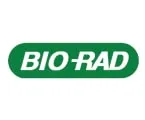
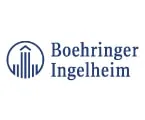
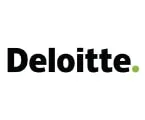
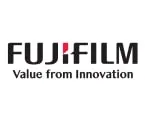
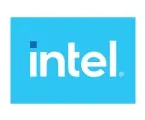
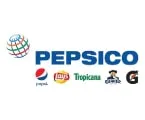
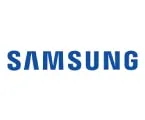
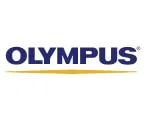
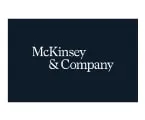
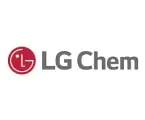
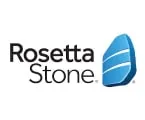

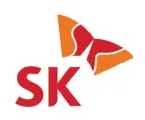
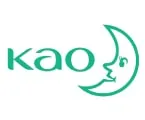
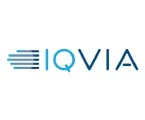
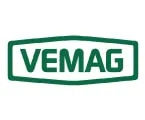
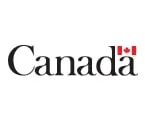
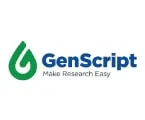
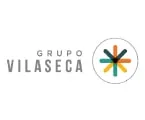
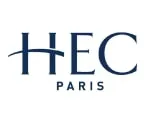

Published Date: Nov-2024
Please enter your corporate email id here to view sample report.
Subscribe to get the latest industry updates